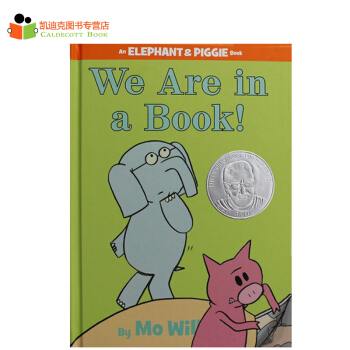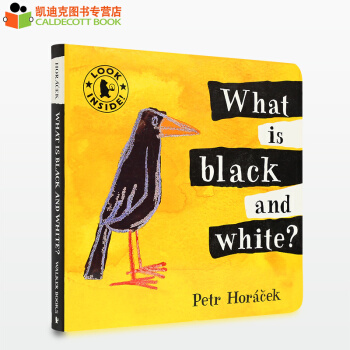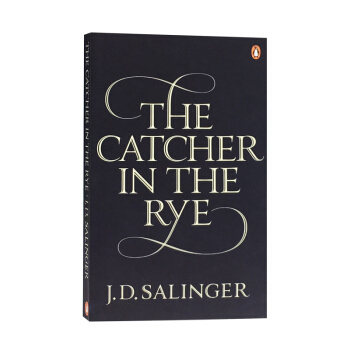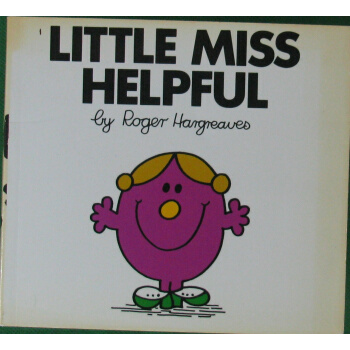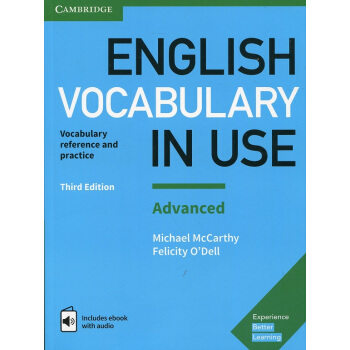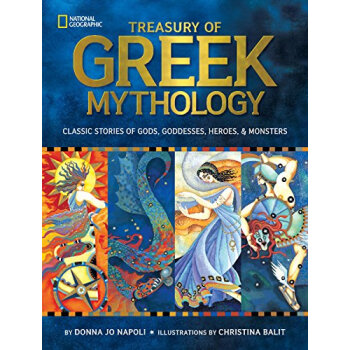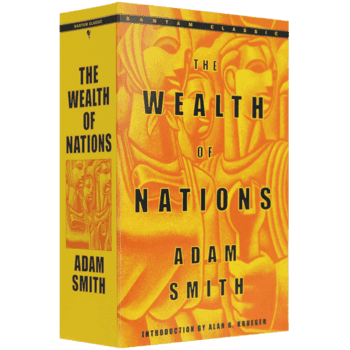

具体描述
经济巨人的理性之作,一读就令你恍然大悟的体系之书
亚当斯密的《国富论》,原名直译为《诸国民之富的性质及其原因之研究》。自一七七六年出版以来,全世界的学术界,都曾赫然为所惊动。甚至于各国的支配者们,都相率奉之为圭臬。世界上每个大的或小的经济学家,都曾直挡或间接受其影响。对之推崇到无可进一步推崇,甚至于自命为斯密信徒的人们,亦会从中取出几个章句来批评;反之,对之批评到无可进一步批评,甚至于公然反对斯密主义的人们,亦莫不从中采纳几种意见,作为自己的根本思想。
现代经济学之父亚当·斯密的惊世之作
伟大的经济学经典著作
经济学诞生的奠基之作
西方经济学的“圣经”
经济学的百科全书
《国富论》与《圣经》、《资本论》同为人类不朽的智慧宝典。
OF THE DIVISION OF LABOUR
The greatest improvement in the productive powers of labour, and the greater part of the skill, dexterity, and judgment with which it is any where directed, or applied, seem to have been the effects of the division of labour.
The effects of the division of labour, in the general business of society, will be more easily understood, by considering in what manner it operates in some particular manufactures. It is commonly supposed to be carried furthest in some very trifling ones; not perhaps that it really is carried further in them than in others of more importance: but in those trifling manufactures which are destined to supply the small wants of but a small number of people, the whole number of workmen must necessarily be small; and those employed in every different branch of the work can often be collected into the same workhouse, and placed at once under the view of the spectator. In those great manufactures, on the contrary, which are destined to supply the great wants of the great body of the people, every different branch of the work employs so great a number of workmen, that it is impossible to collect them all into the same workhouse. We can seldom see more, at one time, than those employed in one single branch. Though in such manufactures, therefore, the work may really be divided into a much greater number of parts, than in those of a more trifling nature, the division is not near so obvious, and has accordingly been much less observed.
To take an example, therefore, from a very trifling manufacture; but one in which the division of labour has been very often taken notice of, the trade of the pin-maker; a workman not educated to this business (which the division of labour has rendered a distinct trade), nor acquainted with the use of the machinery employed in it (to the invention of which the same division of labour has probably given occasion), could scarce, perhaps, with his utmost industry, make one pin in a day, and certainly could not make twenty. But in the way in which this business is now carried on, not only the whole work is a peculiar trade, but it is divided into a number of branches, of which the greater part are likewise peculiar trades. One man draws out the wire, another straights it, a third cuts it, a fourth points it, a fifth grinds it at the top for receiving the head; to make the head requires two or three distinct operations; to put it on, is a peculiar business, to whiten the pins is another; it is even a trade by itself to put them into the paper; and the important business of making a pin is, in this manner, divided into about eighteen distinct operations, which, in some manufactories, are all performed by distinct hands, though in others the same man will sometimes perform two or three of them. I have seen a small manufactory of this kind where ten men only were employed, and where some of them consequently performed two or three distinct operations. But though they were very poor, and therefore but indifferently accommodated with the necessary machinery, they could, when they exerted themselves, make among them about twelve pounds of pins in a day. There are in a pound upwards of four thousand pins of a middling size. Those ten persons, therefore, could make among them upwards of forty-eight thousand pins in a day. Each person, therefore, making a tenth part of forty-eight thousand pins, might be considered as making four thousand eight hundred pins in a day. But if they had all wrought separately and independently, and without any of them having been educated to this peculiar business, they certainly could not each of them have made twenty, perhaps not one pin in a day; that is, certainly, not the two hundred and fortieth, perhaps not the four thousand eight hundredth part of what they are at present capable of performing, in consequence of a proper division and combination of their different operations.
In every other art and manufacture, the effects of the division of labour are similar to what they are in this very trifling one; though, in many of them, the labour can neither be so much subdivided, nor reduced to so great a simplicity of operation. The division of labour, however, so far as it can be introduced, occasions, in every art, a proportionable increase of the productive powers of labour. The separation of different trades and employments from one another, seems to have taken place, in consequence of this advantage. This separation too is generally carried furthest in those countries which enjoy the highest degree of industry and improvement; what is the work of one man in a rude state of society, being generally that of several in an improved one. In every improved society, the farmer is generally nothing but a farmer; the manufacturer, nothing but a manufacturer. The labour too which is necessary to produce any one complete manufacture, is almost always divided among a great number of hands. How many different trades are employed in each branch of the linen and woollen manufactures, from the growers of the flax and the wool, to the bleachers and smoothers of the linen, or to the dyers and dressers of the cloth! The nature of agriculture, indeed, does not admit of so many subdivisions of labour, nor of so complete a separation of one business from another, as manufactures. It is impossible to separate so entirely, the business of the grazier from that of the corn-farmer, as the trade of the carpenter is commonly separated from that of the smith. The spinner is almost always a distinct person from the weaver; but the ploughman, the harrower, the sower of the seed, and the reaper of the corn, are often the same. The occasions for those different sorts of labour returning with the different seasons of the year, it is impossible that one man should be constantly employed in any one of them. This impossibility of making so complete and entire a separation of all the different branches of labour employed in agriculture, is perhaps the reason why the improvement of the productive powers of labour in this art, does not always keep pace with their improvement in manufactures. The most opulent nations, indeed, generally excel all their neighbours in agriculture as well as in manufactures; but they are commonly more distinguished by their superiority in the latter than in the former. Their lands are in general better cultivated, and having more labour and expence bestowed upon them, produce more in proportion to the extent and natural fertility of the ground. But this superiority of produce is seldom much more than in proportion to the superiority of labour and expence. In agriculture, the labour of the rich country is not always much more productive than that of the poor; or, at least, it is never so much more productive, as it commonly is in manufactures. The corn of the rich country, therefore, will not always, in the same degree of goodness, come cheaper to market than that of the poor. The corn of Poland, in the same degree of goodness, is as cheap as that of France, notwithstanding the superior opulence and improvement of the latter country. The corn of France is, in the corn provinces, fully as good, and in most years nearly about the same price with the corn of England, though, in opulence and improvement, France is perhaps inferior to England. The corn-lands of England, however, are better cultivated than those of France, and the corn-lands of France are said to be much better cultivated than those of Poland. But though the poor country, notwithstanding the inferiority of its cultivation, can, in some measure, rival the rich in the cheapness and goodness of its corn, it can pretend to no such competition in its manufactures; at least if those manufactures suit the soil, climate, and situation of the country. The silks of France are better and cheaper than those of England, because the silk manufacture, at least under the high duties upon the importation of raw silk, does not so well suit the climate of England as that of France. But the hard-ware and the coarse woollens of England are beyond all comparison superior to those of France, and much cheaper too in the same degree of goodness. In Poland there are said to be scarce any manufactures of any kind, a few of those coarser household manufactures excepted, without which no country can well subsist.
This great increase of the quantity of work, which, in consequence of the division of labour, the same number of people are capable of performing, is owing to three different circumstances; first, to the increase of dexterity in every particular workman; secondly, to the saving of the time which is commonly lost in passing from one species of work to another; and lastly, to the invention of a great number of machines which facilitate and abridge labour, and enable one man to do the work of many.
First, the improvement of the dexterity of the workman necessarily increases the quantity of the work he can perform; and the division of labour, by reducing every man's business to some one simple operation, and by making this operation the sole employment of his life, necessarily increases very much the dexterity of the workman.
A common smith, who, though accustomed to handle the hammer, has never been used to make nails, if upon some particular occasion he is obliged to attempt it, will scarce, I am assured, be able to make above two or three hundred nails in a day, and those too very bad ones. A smith who has been accustomed to make nails, but whose sole or principal business has not been that of a nailer, can seldom with his utmost diligence make more than eight hundred or a thousand nails in a day. I have seen several boys under twenty years of age who had never exercised any other trade but that of making nails, and who, when they exerted themselves, could make, each of them, upwards of two thousand three hundred nails in a day. The making of a nail, however, is by no means one of the simplest operations.
用户评价
相较于现代那些快速更迭的经济理论,这部作品散发出的那种历经时间淘洗的智慧光芒,是无可替代的。它让你明白,很多看似“新颖”的经济思潮,其实都可以在这里找到源头活水。阅读过程中,那种清晰、冷静、充满逻辑的论证方式,极大地锻炼了我的批判性思维。我发现自己开始用一种更系统、更结构化的方式去审视新闻里报道的贸易摩擦、劳动力短缺或者投资热潮。它不是提供一个简单的答案,而是提供了一套工具箱,让你能够自己去拆解和理解复杂现象。每一次重温,都会有新的领悟,仿佛拨开了历史的迷雾,直接触碰到了经济思想的源头活水,那种感受,足以让任何对人类社会运作机制抱有好奇心的人热血沸腾。
评分说实话,这本书的阅读体验是充满挑战性的,但也是极富回报的。不同于现代那些包装精美、结论先行、语言简化的商业书籍,亚当·斯密的文字带着一种古典的、近乎哲学的严谨性。它需要你投入大量的时间去理解他对于重商主义的批判是如何层层深入的,以及他如何用详实的案例来支撑“自由贸易”这一核心论点。我时常会停下来,思考他描述的那个工业革命前夜的社会图景,与我们今天这个全球化、信息爆炸的时代究竟有哪些根本性的共通之处。那种对“自然价格”和“市场价格”之间微妙关系的探讨,至今仍是理解通货膨胀和市场波动的基础。这本书的价值不在于提供一个简单的操作指南,而在于为你提供了一套分析世界经济现象的思维框架,一个真正理解财富创造本质的棱镜。
评分当我合上这本书时,脑海中浮现的不是冰冷的数字和图表,而是一幅幅生动的社会生活画面——那些工匠、农夫、商人,他们为了微薄的利润而辛勤劳作,却无意中推动了整个文明的进步。这种人文关怀与经济逻辑的交织,是我认为它超越了纯粹技术性著作的关键所在。作者似乎在说:经济学不是为了让富人更富,而是为了揭示如何通过合理的制度设计,让所有参与者都能获得更有尊严的生活。他对工资、地租和利润的细致划分,清晰地展示了社会各阶层在价值创造中的角色和应得的回报。这种对社会公平性的潜在关怀,隐藏在对市场效率的赞美之下,使得这部作品不仅是经济学的经典,更是一部深刻的社会学著作。它教会了我,经济行为的背后,永远是活生生的人。
评分这本巨著的份量,光是捧在手里就能感受到一股沉甸甸的历史感和思想的重量。初次翻开它,最直观的冲击是那种对世界运作机制的宏大叙事和对人类行为细致入微的观察的完美结合。它不是那种可以轻松浏览的读物,更像是一张需要耐心铺展开来的、描绘整个社会经济肌理的地图。作者的笔触如同手术刀般精准,剖析着当时(乃至今天看来依然有效)的商业活动、劳动分工的精妙之处,以及市场如何自发地形成秩序。我尤其被那种不依赖于中央集权或道德说教,而是基于个体追求自身利益的“看不见的手”的论述所折服。这种将个体理性选择汇聚成宏观社会效益的洞见,简直是为后世的经济学奠定了基石。阅读过程更像是一场与一个世纪前最伟大头脑的深度对话,需要反复咀嚼那些跨越时代的真知灼见,才能真正体会到其构建的逻辑链条的坚不可摧。
评分这本书的结构布局,初读时可能会让人感到有些散漫,因为它涵盖的内容远超我们今天所定义的“经济学”范畴,更像是一部涵盖政治学、历史学和道德哲学的综合性论著。然而,随着阅读的深入,你会发现这种广博恰恰是其力量的源泉。斯密并没有将经济活动孤立地看待,而是将其置于一个更广阔的社会道德和政治环境之中进行考察。例如,他对公共工程和教育的强调,就体现了他对市场失灵区域的清晰认识,以及对一个健康社会所必需的“公共品”的深刻理解。这种全面的视角,使得我们不能简单地将他归类为纯粹的自由放任主义者。相反,他是一个深思熟虑的制度设计者,他所提倡的自由,是建立在清晰的法律和良善的社会结构之上的,绝非无序的野蛮生长。
相关图书
本站所有内容均为互联网搜索引擎提供的公开搜索信息,本站不存储任何数据与内容,任何内容与数据均与本站无关,如有需要请联系相关搜索引擎包括但不限于百度,google,bing,sogou 等
© 2025 book.idnshop.cc All Rights Reserved. 静思书屋 版权所有


